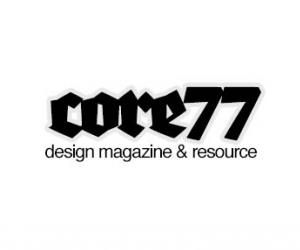First Published in
Daljit Singh is creative director and founder of Digit, one of the world's longest-established digital agencies. Working with brand leaders including Coca-Cola, Habitat, Shell and Unilever, Digit creates award-winning online environments and content punctuated with humour and personality.
Digit uses digital communications channels to connect brands to consumers. "We believe in surprising and delighting through interaction, creating moments that matter and giving our clients a competitive advantage," says Singh, who addressed Design Indaba delegates. "The core of our business is online, but we have always taken our work beyond the screen by creating physical interaction experiences for our clients. These have been used in store, at events, in museums and for brand launches.
"Aside from creating beautiful products that work well, our output is underpinned by core values of Simple Human Interaction. These values acknowledge that communication is about people, not technology, and this is why we use 'Feed', a set of principles that help guide our work."
'Feed' is Digit's approach to understanding the art and science of interaction. It provides the company with a framework for understanding interaction so that they can use digital technology and design to improve interaction. 'Feed' is rooted in human nature, putting people first and technology second, says Singh.
Digital debate
Singh spoke to Tasos Calantzis, the managing director of Readymade, an award-winning product design company based in Pretoria.
You were a judge at the 2007 Construction New Media Awards, which ran concurrently with the Design Indaba. Could you tell us a little about the entries at this year's awards?
The quality of the professional work was good, especially at the top level, and this shows that this is a maturing market where brands have begun to understand the importance of the web. As always, the student work was of a very high standard, we gave out quite a few awards to students, which reflects the quality of work. Also some tutors from design schools mentioned to me afterwards that they had even better work back at their schools.
Yes, apparently you took a liking to the work of last year's student winner, Khayalethu Mtshali.
Actually the prize Khayalethu won was to spend a week with Digit, and we were very impressed with his abilities during that time. So we took him on for three extra weeks and I offered him a job but he couldn't make the commitment because he's going to study in the US. He's one of the best students I've seen for many years.
This is your second Design Indaba, overall how are you enjoying it? You said earlier – and I quoted you for website Core77 – that the Design Indaba is great because of the interaction between the speakers and the delegates.
Exactly. You know, as a speaker, you finish up on stage and immediately walk back into the audience instead of some annexed room; it's good that people can come up and talk to you. I find it great that all the speakers spend time listening to the other talks and find them very motivating and compelling.
I discovered a connection to Digit while I was researching for this interview. You designed two of my favourite sites, Vodafone Simply and Motorola Future. They show the idea of Simple Human Interaction, which is Digit's ethos and also a very big part of contemporary product design. Could you explain that a little?
It's because of what we do; it's all about interaction and communication, so the three words 'simple human interaction' encapsulate what we've always done. They're the words that have been used to describe our work and have become fundamental to our work. Our clients respond very positively to that. We've found that especially in our work with the technology brands; this concept really means something to them.
I also visited your Worldchill site for Coca-Cola. There you have two other very contemporary trends working together: user research by co-creation.
Basically what we did there (inviting people to make comments) is an example of advertising moving away from a sort of "here's the message, now buy me" mindset to a deeper interaction. Youtube and blogs give people the ability to create whatever content they like but the environment becomes so noisy that you can't get the message across. So Worldchill was based on the premise of asking people how they feel and mapping that, which blended people's interaction and the brand message. In the end some people started subverting it, but that's something you have to allow for; it's a sign that online interaction between brands and people is becoming more sophisticated. It's going to be interesting to see how that evolves.
















